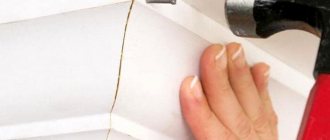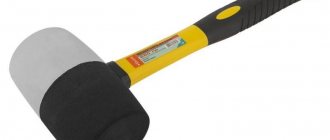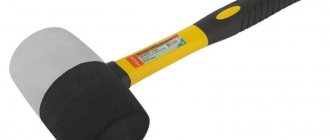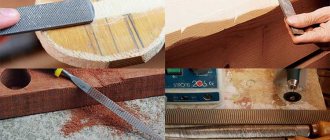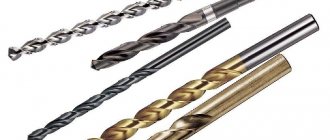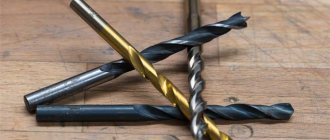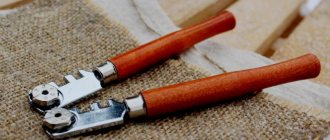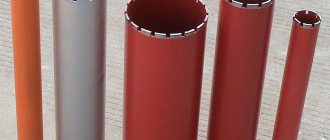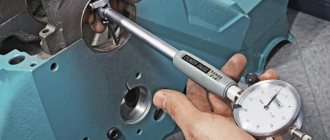What is a plaster float
For the initial leveling of the plaster layer, a rule is used - this device creates the direction of the leveling plane. After the rule, a grater and a trowel are used - tools for rubbing, smoothing plaster, removing flaws and removing excess mortar. The grater helps to obtain a smooth finish, so it is widely used for finishing walls.
Scraper and floats for plastering work
Until recently, craftsmen made their own tools from wooden blocks with a smooth surface, to which they attached a handle. Such improvised graters did not last long, since wood quickly absorbs moisture and cracks under temperature changes. Modern instruments are made from more durable materials, although wooden ones are also available for sale.
High-quality products allow grouting and sanding and have many advantages:
A special feature of construction floats is their ability to create both smooth surfaces and form texture when it comes to decorative plaster. There are even special tools on sale with a textured surface that allow you to “draw” interesting pictures and ornaments on the wall. Typically, the length of the tool platform is 12–36 cm, width – 12–18 cm, thickness – no more than 2.5 cm. The handle can be open or closed, attached to the sole or molded with it.
Points in using such tools
Graters and trowels, as mentioned above, are used for grouting walls after a layer of plaster has been applied. When working, it is necessary that the movements are not sharp, counterclockwise in a circle, and the pressure is not great.
Professionals in this matter can move up and down or even in the form of a figure eight.
Most often, one part of the surface is treated first, then move on to another. Before you start working, you need to let the plaster dry a little, while the base of the product is periodically moistened.
Sometimes the tool can be used as a spatula, that is, they even spread wet plaster with it. When you have to work with decorative mortars, you can use a trowel to make stretching movements to create grooves.
To get a pattern in the form of a spiral, make such movements with a sponge or plastic grater. The full texture can be seen when the plaster has dried; individual areas are finished with a trowel when necessary.
Principle of operation
The tool acts mechanically: the sole grinds off the unevenness of the plaster layer, smoothes it, makes it even and smooth, or imparts other decorative properties. The procedure for using construction devices is as follows:
The grater is also used for grouting plaster when it has already dried. Rubbing is the final stage of plastering work, during which the wall will become smooth. In this case, the movements are performed not in a circle, but up and down. After processing one strip, they move to another section.
To get excellent results, it is important to use only a properly mixed solution. Plaster with fine fillers is suitable for finishing work. It will not be possible to rub larger fractions until smooth, except perhaps for subsequent laying of tiles.
Finishing grades of plaster mixtures are subjected to grinding and grouting
How to use a grater
Tools for grouting plaster work on the principle of mechanics. The sanding pad erases the bumps formed on the surface, smoothes out roughness, making the wall smooth. In the case of finishing, a decorative texture of the coating is created in this way.
The work is carried out in a certain order:
- A small amount of mortar is mixed in the container. Exactly as much as you can work out in one approach. Then the plaster mixture is applied to the wall and leveled using the rule.
- When the layer dries, sanding begins. Using light pressure on the grater, press it to the surface and, using circular movements in a counterclockwise direction, evenly rub the wet plaster over the work area. This is done quickly, without allowing the plaster composition to completely harden. The pressure used in the work compacts the layer of plaster, which improves the quality characteristics of the working surface.
- The final stage of plastering is carried out on an already dry surface. In this case, the grater works in the direction from top to bottom.
When working with decorative plasters, the composition is stretched over the wall to obtain a relief pattern. The spiral pattern is obtained by moving a sponge or plastic float in a circular motion over the plaster mortar. The pattern becomes clear after the construction mixture has completely dried. Individual areas are later polished with a metal float for decorative plaster.
Types of tools
The main difference between all graters is the material from which they are made. Outwardly, they are all similar to each other, and the principle of operation of the instruments is the same. The most popular are graters made of polyurethane, wood, foam, metal, plastic and sponge.
Polyurethane
Construction devices made of polyurethane are now considered very popular. They are suitable for applying and grinding gypsum, lime and decorative plaster. The thickness of polyurethane floats reaches 3–25 mm, the “size range” is as follows:
The thinnest soles (3–5 mm) of an oblong shape are suitable for working with decorative plaster; thicker ones are suitable for rubbing and leveling ordinary mortar. The products last a long time, are comfortable, lightweight, and have an ergonomic design.
Polyurethane, as a heterochain polymer, is very strong and elastic, and the most wear-resistant modifications of the material are used for the manufacture of construction floats.
Features of using the tools:
Wooden
Wood products are considered the simplest, even quite primitive, and therefore are rarely used due to the availability of other options. They strongly absorb moisture during operation, because any plaster solution contains water, and the wall becomes wet during rubbing. The service life of wooden floats is short, they gradually become deformed and increase their weight, as a result, the labor intensity of troweling the plaster for the master increases greatly.
Wooden grater Mastertool
Foam
They are the most inexpensive option for construction floats, but are not suitable for all types of work. For their production, fairly hard types of foam are selected, which perfectly level and smooth the plaster. Such a tool is not suitable for creating relief, but gypsum and polymer plasters after processing will acquire a perfectly smooth surface. You must handle foam tools with care, because they are quite fragile and can break.
Foam plastic grater 130x270 mm KLASSE
Metal
Most often, metal construction floats are used for ironing walls. During ironing, a thin water-repellent film is formed on the coating, which will protect the plaster from the negative effects of moisture. Smooth metal tools make the surface smooth, almost glossy. With the help of such floats you can compact even porous mortar that other tools cannot handle.
To rub rough plaster, you can use metal floats with a rough grinding surface. They are especially suitable if special ladles were used to spread the plaster. Next, the finishing layer is processed with a trowel with a smooth sole, using circular grouting or up and down movements. Metal tools with a serrated base are also available for sale. They are used for leveling adhesives under ceramic tiles.
Grinding grater with metal working part
Plastic
Such graters are used for high-quality application of building mixtures: putty, plaster, decorative materials, adhesives. They distribute the mass well over the surface, smooth out seams and irregularities, and are suitable for forming bark beetle-type coatings. However, the service life of plastic graters is short, so they are often chosen for one-time jobs. They are also not suitable for applying thick layers of plaster.
Plastic grater STAYER
Sponge graters and graters
Sponge instruments are made from foam, latex or rubber. They are used for processing structural plaster and grouting other decorative materials. Typically, the float body is made of lightweight aluminum or polyurethane, and the sponge itself is located only on the grinding pad. Such tools allow you to create designs on plaster and cannot be used to compact the mortar, give it perfect smoothness or gloss.
Product with sponge coating
Dimensions
The dimensions of the tool depend on the type of plaster for leveling which it is used. Thus, for decorative plastering work, graters with a thickness of 3-5 mm and an oblong shape are used.
For lime mortars, the recommended thickness is 20-25 mm, sizes from 120*240mm to 180*320mm.
Polyurethane grater 120*240mm
The handle can be open or closed, like a door.
For certain types of work, other sizes are acceptable.
Grater or grater: what is the difference
A grater is a grater that is narrower and longer than a regular one. The plaster trowel also has another name - trowel. Most often, it is used not for completely rubbing the plaster, but for removing flaws from an already applied layer, leveling small areas, and removing excess mortar. If you want to make the wall smooth, you cannot cope with this task with just a float; you need a regular grater.
Polyurethane trowel 120x800mm
What is better to use
The choice of tool depends on the specific task facing the finisher, his level of skill and proficiency in plastering supplies. A grater is considered the most successful option among professionals: it allows you to do most of the work of applying, rubbing and sanding walls, which cannot be said about a trowel. Most often, experts choose polyurethane floats, which can be used for a long time and carry out a wide range of tasks for covering different surfaces.
How to choose
When choosing a tool, they start from what the grater will be needed for:
- For plastering straight and wide surfaces, choose a medium or large tool. Compact graters are used for small areas.
- For sections of walls with window and door openings, it is better to use a short trowel. The long one is suitable for working in open areas.
- To prepare the wall for painting, it is better to choose a metal option.
- To obtain relief, a tool with a sponge base is suitable.
- To create a pattern similar to decorative bark beetle plaster, you can use wooden graters with cracks.
Before starting work, craftsmen recommend inspecting the tool for chips, potholes and other defects that can scratch the surface.
It is important to pay attention to the edges of the tool: they should be smooth without nicks or irregularities.
Before purchasing, you should hold the device in your hand. A good tool is equipped with a comfortable handle with grooves for your fingers.
Advantages and disadvantages of various plaster floats
Each tool has its pros and cons, so the choice is always up to the master:
| A type of grater | Advantages | Flaws |
| Wooden | Low price, lightness, compactness | Rapid impregnation with moisture, deformation, abrasion, short service life, rapid loss of quality |
| Foam | Cheap, the ability to perfectly smooth fine plasters | Fragility, especially in the handle part, the need for experience to work with such a tool |
| Polyurethane | No need for experience, lightness, ergonomics, low abrasion, optimal softness, elimination of deformation over time, suitable for almost all types of work, including large volumes | High price for products made from the highest quality polyurethane (standard graters are inexpensive) |
| Plastic | Corrosion resistance, durability, easy to hold, lightweight | Lack of flexibility, brittle due to temperature changes, only suitable for small jobs, unsuitable for beginners |
| Spongy | Ability to work with decorative plaster and create interesting effects, lightness, ergonomics | Useless for rubbing to perfect smoothness, gloss, risk of the spongy sole being torn from the base if used carelessly |
| Metal | Use for compacting and ironing plaster, for leveling porous mortars, strength, smoothness, smoothing seams | Unsuitable for classical leveling and rubbing of mortar, for decorative plasters, high cost, prone to corrosion (we are talking about floats made of simple carbon steel) |
What is better to use
When choosing a tool, it is necessary to rely on the specific tasks that the master faces, as well as on the level of professionalism of the performer, and the ability to handle such tools.
The most favorite tool among specialists is a grater - it can be used to apply plaster, sand it, and also grout it. The same cannot be said about the trowel.
The most popular tool among professionals is considered to be a product made of polyurethane, which lasts for quite a long time and can be used to solve a large number of surface repair problems.
Pros and cons of different trowels for plaster.
Each type of product has both positive and negative qualities, so the choice depends only on the performer of the work. The advantages of wooden products: low cost, light weight and small size.
Cons: absorbs moisture in a short period of time, loses shape, wears off, poor quality, not long-term use. Advantages of foam floats: low price, excellent troweling of finely dispersed plaster.
Cons: fragile, requires experience to use.
Advantages of polyurethane floats: no experience required to use, lightweight, does not deform over time, suitable for almost all jobs, suitable for large volumes. Cons: High quality graters are expensive.
Advantages of plastic products: not afraid of corrosion, durable, comfortable to hold, lightweight. Disadvantages: not flexible, can break if the temperature increases, suitable for a small area, not suitable for people without experience.
The advantages of sponge trowels: you can work with decorative solutions and create various effects. Cons: they will not be able to create a perfectly smooth surface; if you do not use it very carefully, the sponge may come off the frame.
Advantages of metal floats: used for compacting mortar, perfectly levels porous plaster, perfectly covers seams. Cons: not suitable for regular leveling of plaster, for decoration, high price, corrosion may occur.
Features of the use of graters and half-graters
Such tools are used for rubbing the wall after applying the finishing layer of plaster (covering). Movements must be carried out smoothly, with even pressure, “drawing” circles counterclockwise. Experts also use other types of movements: up and down, in the shape of a figure eight. Typically, wall treatment is carried out sequentially in small sections. After making the first section smooth, move on to the next.
You need to work on dried plaster, periodically wetting the sole of the tool with water. You can even spread the raw solution over the base with a grater, using it instead of a spatula. To work with decorative plasters such as bark beetles, other techniques are used: they stretch the solution over the surface, creating small grooves. To create a spiral texture, make appropriate movements with a plastic or sponge grater. The drawing will fully appear only after the wall has dried. Next, individual seams and irregularities are polished with a trowel.
What kind of grater is needed for decorative plaster
To create a decorative surface using the bark beetle technology, a special plastic sponge grater for decorative plaster is used. It helps to decorate the wall with different patterns; the patterns are created in different ways by changing the direction of movements when working with a grater. When moving in a circle, you will of course get a circular pattern; if you make movements from top to bottom, you will get the effect of raindrops. Important! Do not press unnecessarily on the surface plastered with bark beetle with a plastic float, so as not to deform the layer.
If you decide to create a soft relief, then you need to use smooth graters; for an expressive structure, there are textured models.
To create a decorative surface using the bark beetle technology, a special plastic sponge grater for decorative plaster is used.
The best manufacturers
High-quality trowels and other troweling tools are produced by Zubr, PU-TECH, DEXX, Stayer and others. Examples of quality models are:
Despite the length and complexity of plastering work, using high-quality tools can seriously simplify the task. A responsible attitude to the choice of a construction float and the correct use of it will help you get an excellent result: perfectly smooth and beautiful walls.
Source
Types of materials used to make tools
All existing plaster trowels, regardless of design and specific purpose, are made from the following materials:
1. Wood is a traditional material from which plaster trowels have long been made. But wood, in addition to its advantages - cheapness, ease of processing, also has serious disadvantages - it quickly wears out, roughness appears on it.
Because of this, the solution sticks to the working surface of the trowel and is applied unevenly. Moreover, during use, wood absorbs water from the solution and swells. And later it dries out and cracks. As a result, the plaster trowel becomes completely unusable.
2. Polystyrene foam - extremely cheap. For manufacturers of construction tools, it is attractive due to the ease of making graters from it. From the point of view of inexperienced users, it is attractive both in price and in its qualities - lightness and water resistance. But, unfortunately, this is where the advantages of polystyrene foam graters end.
Yes, they are light and when using them, your hands do not get very tired, but working with a grater involves quite significant loads on both the handle and the working sole. As a result, very quickly, after a couple of meters of wall area, the handle of the foam trowel breaks off, and its sole becomes covered with clearly visible scratches and dents.
3. Rubber - this material can be used as a component of the handle (this makes working with such a tool more convenient), and as a sole - here it is superior to both wood and polystyrene foam, but is still not sufficiently resistant to abrasion.
4.
Polyurethane - the trowel can be made entirely of it, or only its working surface. This material is characterized by high wear resistance, water resistance, low weight and reasonable price. 5. Plastic is a good material, but its durability, especially fragility (primarily the grater handles) can vary greatly depending on the manufacturer. 6. Metal - most often a variety of aluminum alloys are used here.
Such a tool is always very durable, can withstand significant mechanical loads, but at the same time is lightweight and durable. The working surface of such graters is replaceable. It is secured using a special clamp and a wing nut. Most often, an abrasive mesh is used with metal graters. The listed materials can also be used in combination with each other. In addition, a sponge of different densities, felt, felt (for polishing) or a special mesh with an abrasive coating and cells of different sizes (for rough abrading of solution deposits) can be used as a replaceable working surface.
Using a plaster float
Depending on the purpose of the room, the location of the wall (inside or outside the room), the required type of plaster is selected. These can be either traditional, the most common ones - for example, based on clay, cement, gypsum, or more modern compositions.
After this, prepare the required amount of solution.
It depends on the surface area and the speed at which the plasterer can work. Next, the walls are sprayed, a layer of primer is applied to them, and only after that a quick, even layer is applied—the actual plaster is applied. The plaster that has been applied to the wall in advance (for example, with a trowel) is leveled by moving from the top of the wall to its bottom. In this case, it is necessary to maintain a sufficient and equal pressure force on all sections of the wall, and the plaster float itself is moved along a trajectory reminiscent of the number “8”. When the entire wall is covered with plaster, but still remains damp, it is rubbed and compacted. After about 6 hours after this, the dried plaster is sanded. In this case, use a grater with a working surface made of felt, felt or sponge of sufficient density. The grater is moved from top to bottom. It remains to wait about 6 days until the plaster is completely dry. If defects are detected on it (for example, sagging), they are removed with a metal trowel with an abrasive mesh.
Basic recommendations for use
- When starting work on plastering walls, correctly assess the space being treated - prepare exactly as much mortar as you can apply and level before it dries out and loses its binding properties.
- Prepare graters of different sizes in advance - a small one for problematic and narrow places (for example, in various niches, near window sills and similar places). And the wider and longer ones are for open areas.
- Always remember the need to control the applied forces - the solution must adhere to the surface on which you are applying it, and it must be applied as evenly as possible, without noticeable sagging or depressions.
- The main thing when working with a plaster trowel is high-quality compaction of the applied plaster; its strength and smooth surface after drying depend on this.
Plaster float: purpose and use of a construction float
Finishing work is an integral part of the construction and renovation of any building. One of the traditional stages of this process is plastering of surfaces. The use of modern finishing mixtures, as well as tools such as a grater and plaster trowel, can improve the quality of processing in large volumes. With their help, it is easy to eliminate any irregularities on your own without the involvement of professional craftsmen.
Finishing work is an integral part of the construction and renovation of any building. One of the traditional stages of this process is plastering of surfaces. The use of modern finishing mixtures, as well as tools such as a grater and plaster trowel, can improve the quality of processing in large volumes. With their help, it is easy to eliminate any irregularities on your own without the involvement of professional craftsmen.
Difference and purpose of finishing tools
The trowel is designed to apply the mixture in an even layer while simultaneously eliminating defects in the plastering process. When it is necessary to remove excess mortar from the walls or level the base. This is an excellent solution for processing large areas, but it is difficult to obtain a perfectly smooth surface with its help.
Previously, wood was used to make construction finishing tools, the main disadvantage of which is saturation with moisture. As a result, the base swelled and became heavy, and when it dried, it became deformed and cracked. Today, the choice of materials is much wider, so products made from polyurethane, foam, rubber, plastic, metal, and sponge have appeared.
A plaster grater is a simple device, but it has a number of positive characteristics:
For a beginning craftsman, a polyurethane grater is suitable, characterized by moderate strength, lightness, and durability. It is used for one-time grouting, when you need to apply and level the solution in a thin layer. Sponge is used when working with decorative plaster. A metal tool is used if it is necessary to level the base of porous mixtures before coating it with paint.
Types of plaster floats
After applying the finishing material to the wall, it needs to be prepared for gluing or painting, made smooth and sanded, for which the following tools are selected.
Grater. If the dimensions in width do not exceed 80 mm, then it is used to level small areas, usually located near windows, doors, and under window sills, since it is more convenient to work with a short blade in such places. A 120mm wide tool is better suited for working in open areas. Based on the characteristics of the manufacturing material, many builders choose polyurethane trowel .
Foam products are of poorer quality and do not last long. Very often the handle breaks off, and the canvas itself is subject to rapid abrasion, which causes it to begin to stick to the base. But the cost of such a tool is lower. Therefore, it is used by beginners to practice technique when leveling small surfaces.
A more profitable solution is a polyurethane plaster trowel. Its large dimensions are perfect for effectively applying the solution to large areas and its further high-quality leveling. The tool can be made of wood, a fairly durable material. Therefore, it has a long service life, but over time the canvas becomes covered with longitudinal small grooves and begins to stick to the applied composition. When worn away, the corners lose their clear outline, which negatively affects the quality of processing at the junction of two walls, window sills, door and window openings.
The use of a sponge trowel at the finishing stage is justified when applying plaster using special methods, after which the surface acquires a unique, inimitable appearance. Typically its body, made of lightweight aluminum, has an ergonomic design. The grinding surface is made of sponge of various structures, soft or dense. Therefore, during the work it does not leave marks or scratches. It must be handled with care, avoid mechanical damage, and do not subject it to excessive loads.
Even after the work of professional painters, sagging or depressions are found on the surface. Therefore, to sand the walls to zero, a grout float with meshes specially designed for this case is used. They are attached to the body.
Depending on the composition of the applied material, meshes with different cell sizes and abrasive coating densities are offered. The fine-mesh structure of such nozzles is well suited for processing soft putties, while the larger one is suitable for hard ones.
Device, characteristics and properties
A classic grater is a rectangular board with an attached handle.
The working surface is made of various materials, each of which is suitable for specific tasks.
The tool has a one-piece or prefabricated design.
In the second case, the handle is attached using special racks that support it on both sides.
According to GOST, the connection of the racks must withstand a static load of at least 10 kgf.
Aluminum and alloys are often used to make the base of graters; the handles are made mainly from coniferous or hardwood.
There are no generally accepted standards for the shape of the base and handles, so they may vary from manufacturer to manufacturer.
Dimensions
The size of the tool directly depends on the tasks it must perform.
The base thickness of small graters is about 10 mm.
As a rule, the longer the length, the thicker the base, which eliminates deformation of the working surface during the process of applying and leveling the material.
Typical tool dimensions:
- Small: width – up to 80 mm, length – up to 260 mm;
- Medium: width – from 80 to 120 mm, length – from 260 to 800 mm;
- Large: width - 120 mm, length - from 800 to 1200 mm;
- Weight (depending on the material of manufacture) – up to 2 kg.
The surfaces of the posts and handles in relation to the overall body of the tool may have a symmetry tolerance of 2.5 mm.
GOST
For half-graters, graters and rules, there is GOST 25782-90, introduced in 1991, with technical requirements that each manufactured tool must meet.
Among the conditions:
- The connection of the posts must withstand a pull-out force of more than 40 kgf.
- The connection of the racks must withstand a longitudinal load of more than 10 kgf.
- The flatness tolerance of the web per 1000 mm is 2 mm.
Requirements for materials and product labeling are also specified.
